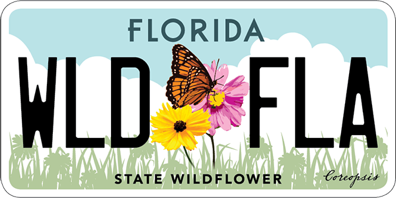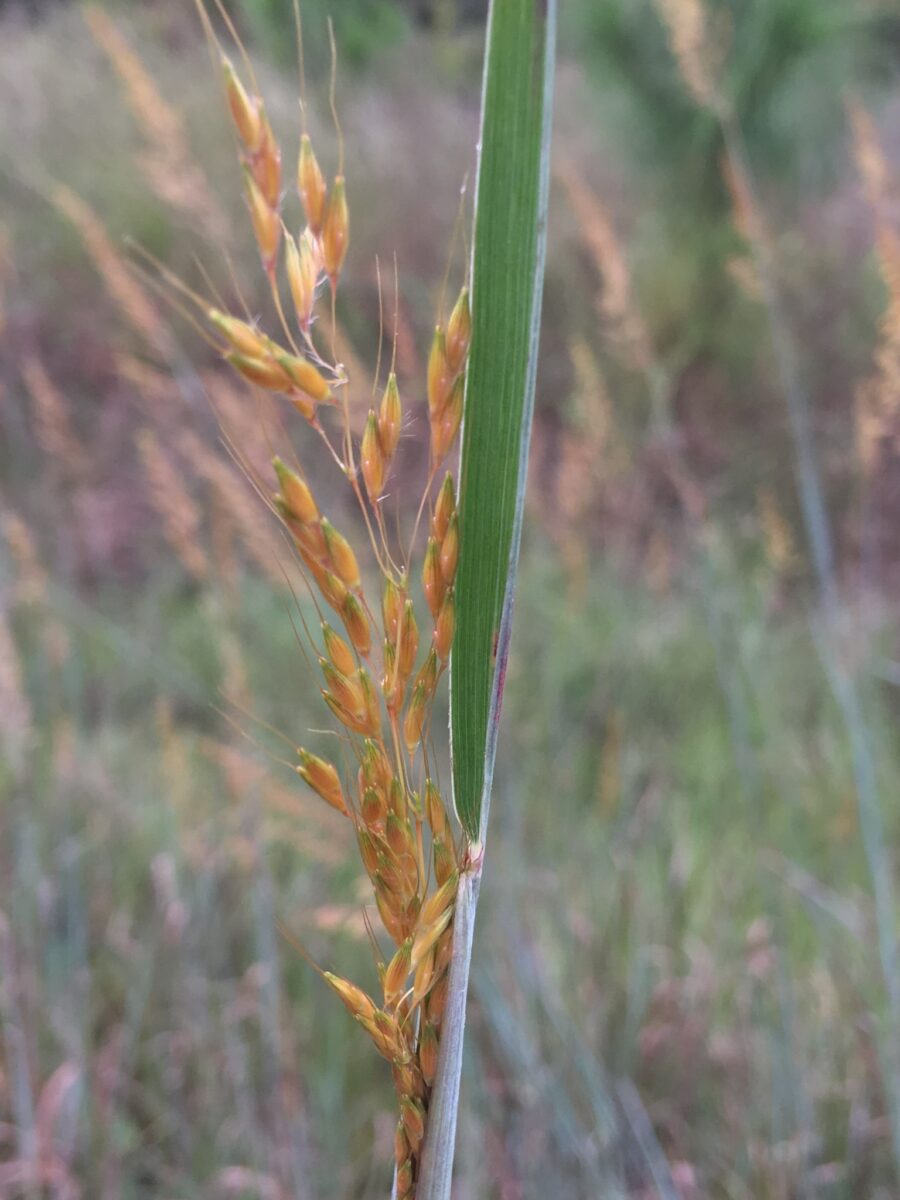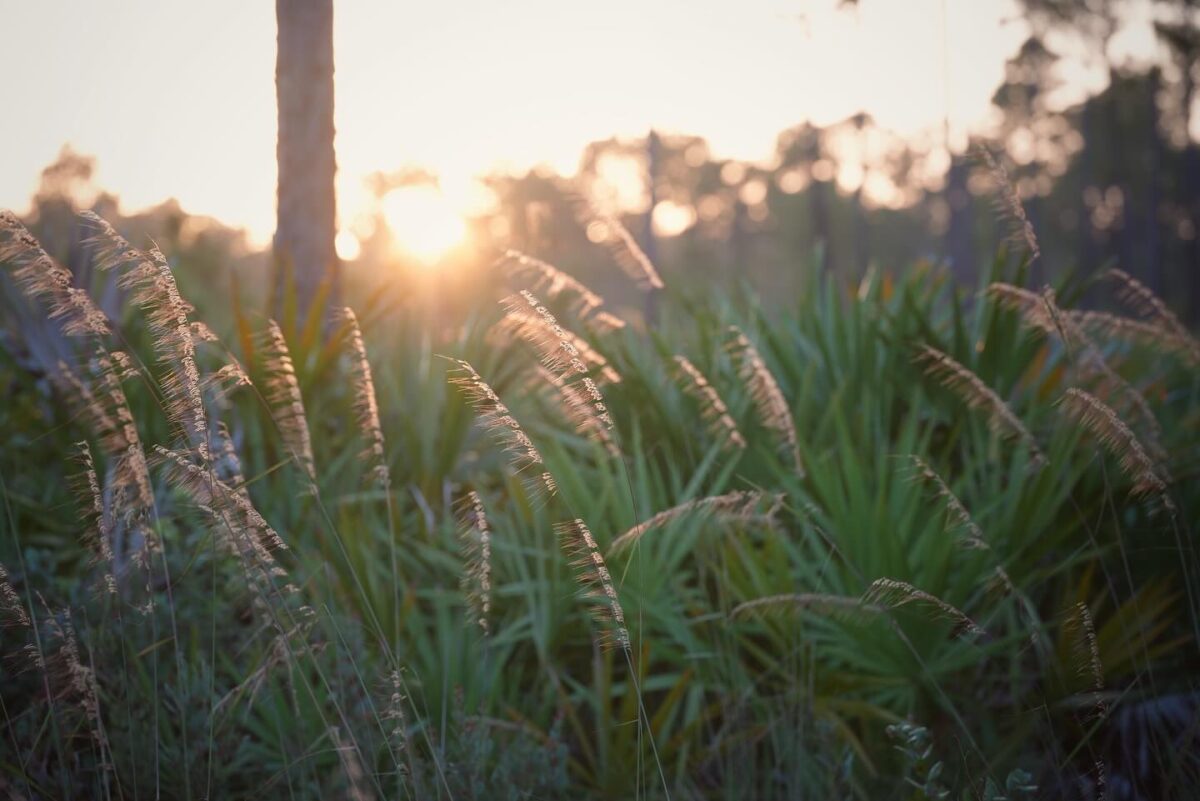Yellow indiangrass
Pictured above: Yellow indiangrass (Sorghastrum nutans) by Sam CC BY. Click on terms for botanical definitions. View post as a PDF.
Yellow indiangrass (Sorghastrum nutans) is a hardy bunchgrass that occurs naturally in flatwoods and sandhills. It is widely distributed across the Midwest and Eastern United States and is one of the dominant grasses of the Midwest’s endangered tallgrass prairie ecosystems. Its tall, late summer to fall flowers add a beautiful yellow-gold color to the landscape, and its seeds are a favorite of songbirds. The low-growing foliage also provides excellent year-round coverage for wildlife.
For most of the year, Yellow indiangrass is relatively indistinct, growing in clumps of slender, bluish-green leaves that reach about two feet high. In summer, however, it sends up tall, attractive flowering stems topped with branched panicles of golden-brown spikelets. Each spikelet contains a floret with three showy yellow stamens and two feathery stigmas. Two glumes are present at the base of the spikelet, one of which is covered in white hairs. Both the foliage and flowers fade to brown in winter, but continue to provide an interesting display.
The genus name Sorghastrum literally translates to “poor imitation of Sorghum.” It is a combination of the genus Sorghum and the Latin suffix –astrum, meaning “expressing incomplete resemblance.” The species epithet nutans comes from Latin and means “drooping,” likely referring to how the spikelets nod downward on the panicles.
Family: Poaceae (Grass family)
Native range: Panhandle, into the northern peninsula and along the Gulf coast south to Sarasota County
To see where natural populations of Yellow indiangrass have been vouchered, visit florida.plantatlas.usf.edu.
Lifespan: Perennial
Soil: Well-drained sand
Exposure: Full sun
Growth habit: Up to 7’ tall
Propagation: Seed, division
Florida regions of landscape suitability: North, Central
Garden tips: Yellow indiangrass is best suited for naturalistic landscapes and habitat restorations. It can also be incorporated into a wildflower garden, but should be used in the background, where its height (when flowering) won’t obscure shorter plants. It may self-seed and can be cut back in winter if needed.
Seeds may be available from the Florida Wildflower Growers Cooperative at www.FloridaWildflowers.com.
Learn more about Yellow indiangrass from the Florida Native Plant Society and the Institute for Regional Conservation.
For information on other Sorghastrum species, see these resources:



